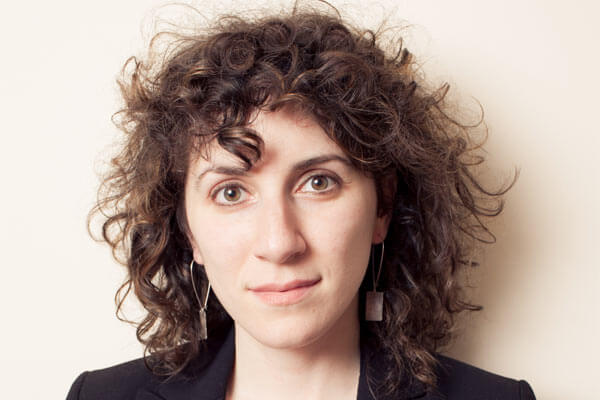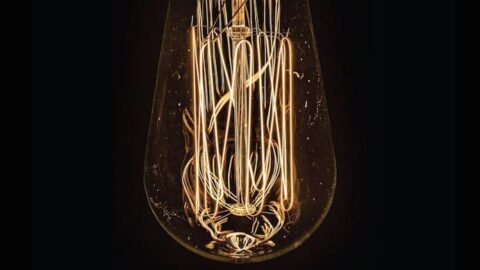Transient Canvas is a bass clarinet (Amy Advocat) and marimba (Matt Sharrock) duo that actively commissions new works for their unique instrumentation. Wired (New Focus Recordings) is the group’s second album of works exclusively written for them and features compositions by Kirsten Volness, Peter Van Zandt Lane, David Ibbett, Lainie Fefferman, Rudolf Rojahn, Mischa Salkind-Pearl, and Dan VanHassel. Every composition on this album incorporates electronic sounds interacting with the duo’s acoustic sounds.
The first work on the album, Year Without a Summer by Kirsten Volness, is an atmospheric electronic soundscape that weaves elongated bass clarinet melodies into the warm texture of the marimba. Sounds melt from the bass clarinet into the electronic track and flow into the marimbas percussive interjections. The high pitched electronics provide the icy feeling of loneliness as suggested by the title. The work develops into an eventual groove that descends into a conflict between the marimba and bass clarinet, and the background electronics fade in and out of the texture like a spirit passing between worlds.
In Peter Van Zandt Lane’s Exergy Bubblebath, small transducers on Sharrock’s mallets trigger sampled electronic sounds that add complexity to each marimba sound. The overt references to 90s electronic music is evident in the laser effects that fly by in the sonic space around the ascending unison arpeggios that create a rhythmic groove, accented by synthetic percussive sounds triggered by the marimba mallets.

Next up is David Ibbett’s Branches, a work that juxtaposes the upper register of marimba and the lower warmth of the bass clarinet register. A sense of meter is provided by consistent and dry percussive loops over which lyrical melodies float, and the piece is structured around a dream-like marimba solo. Advocat’s bass clarinet sound reaches peak density in this work.
The fourth work on the album is Hyggelig by Lainie Fefferman. The composition’s title is a Danish adjective that means “cozy and comfortable.” Hyggelig begins with air sounds that morph into bass clarinet pitch, exploring the spectrum between air and pure tone that encapsulates a wind instrument. Seeing this work performed live would benefit the listening experience, as it can be difficult for the listener to discern whether sounds are coming from the performer or the computer–but this shortcoming is common of recorded electroacoustic music. These simple explorations of the threshold where air meets tone lead into more complex multiphonics, aided by dissonant clusters of marimba pitches conflicting with the bass clarinet tones. Post-minimal presentations of repeated three-note gestures flirt with the spectral sounds of the opening to create a hybrid style often heard in 21st century concert venues.

Somnambula by Rudolf Rojahn explores the relationship between space and resonance, intersecting through explorations in timbre. Simple melodic lines permeate the work, presented in orbits that echo and rotate around the listener. In this work, simple sounds are made complex through timbre manipulation, gestures morph with each subsequent presentation providing continuity yet freshness, beautifully executed for a pleasurable listening experience.
Mischa Salkind-Pearl‘s Solm explores sounds that exist on the fringe. The relationship between attack and resonance is explored throughout this work through the prism of response. The bass clarinet lives on the edge of response, dancing between fundamentals and overtones, weaving in and out of sonic existence in a tantric dance with the electronic track. Finger clicks melt into scratches, scrapes, and ripping sounds of destruction, or rather construction, as morse code rhythms float overhead. A veiled woman’s voice emerges, heard through a wall, and the entire work leaves one feeling like they are on the verge of clarity, trying to remember something at the back of their mind.
The final work is Dan VanHassel’s Epidermis. A primal yet machine-like consistent pulse is present throughout the work, interrupted by guttural screams from the bass clarinet with veiled technological sounds (jet engines, static, sirens) in the background. The processed marimba sounds evoke a primal creature meeting modern machines, eventually morphing into a post-minimal process-oriented groove. Contemporary styles are mix with traditional sounds of each instrument, made foggy and hazy through electronic manipulation and transitioning the listener through the lens of time. The work, and subsequently the album, ends like an old television being turned off–with a clean cut-off of all electronic sounds in an upward blip.
Advocat and Sharrock’s precision and control is pristine; their unique blend of bass clarinet and marimba is lush. The added electroacoustic component adds depth and creates entire worlds, orchestrated in such vast spaces that it is easy to forget that one is listening to a duo. Transient Canvas is a tour de force, and this record is a must-add to any new music-lover’s library, showcasing that a duo can be much more than two musicians.
























